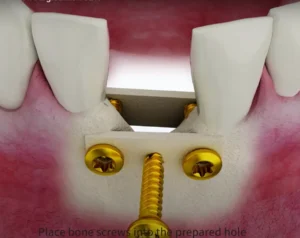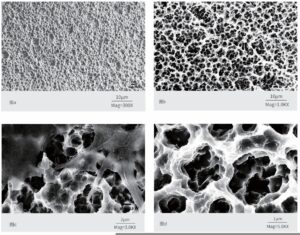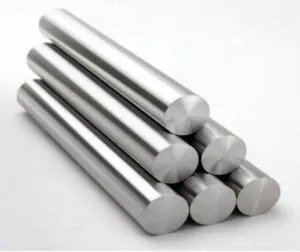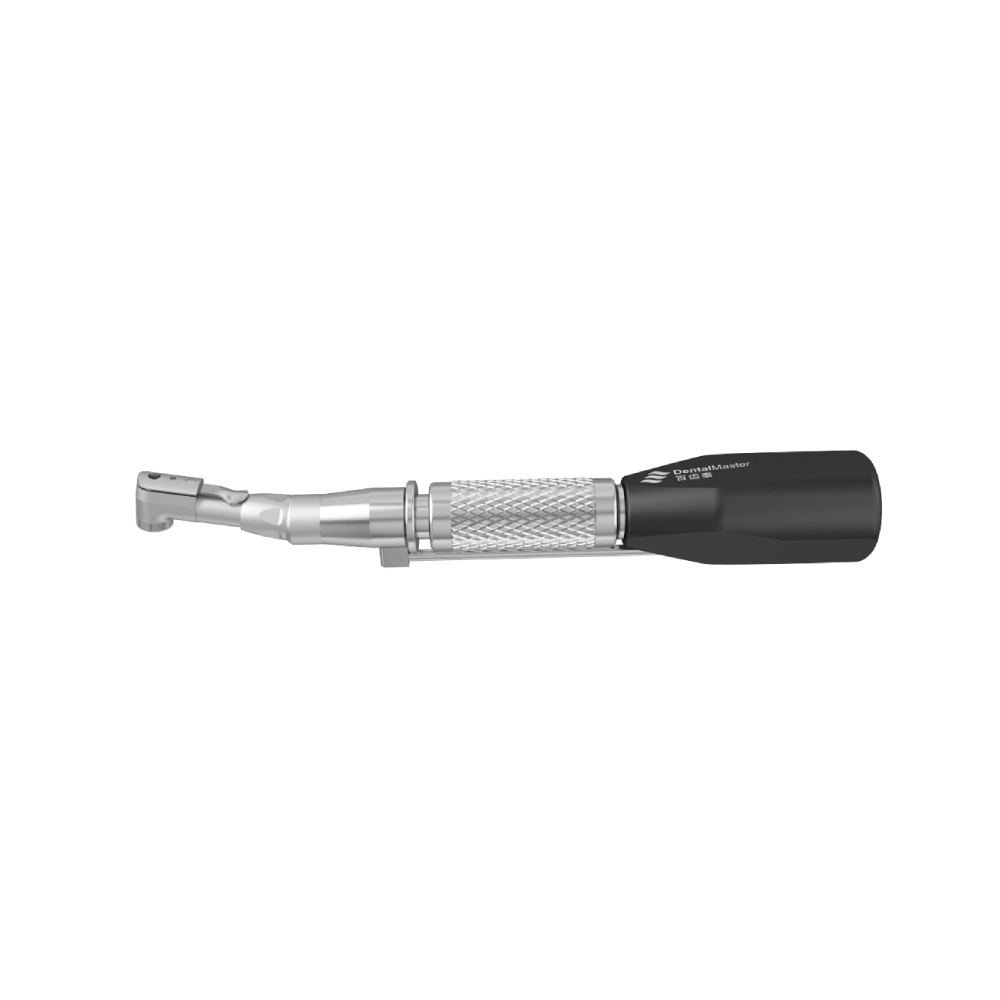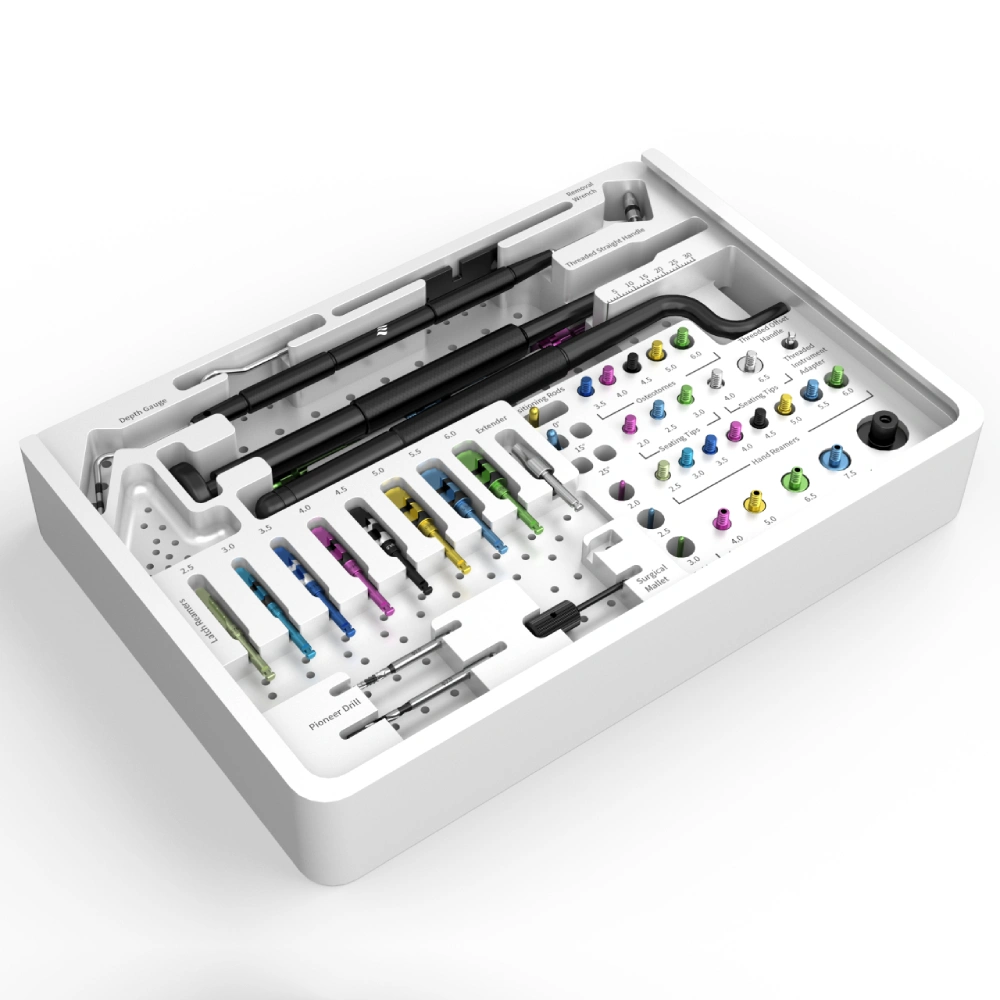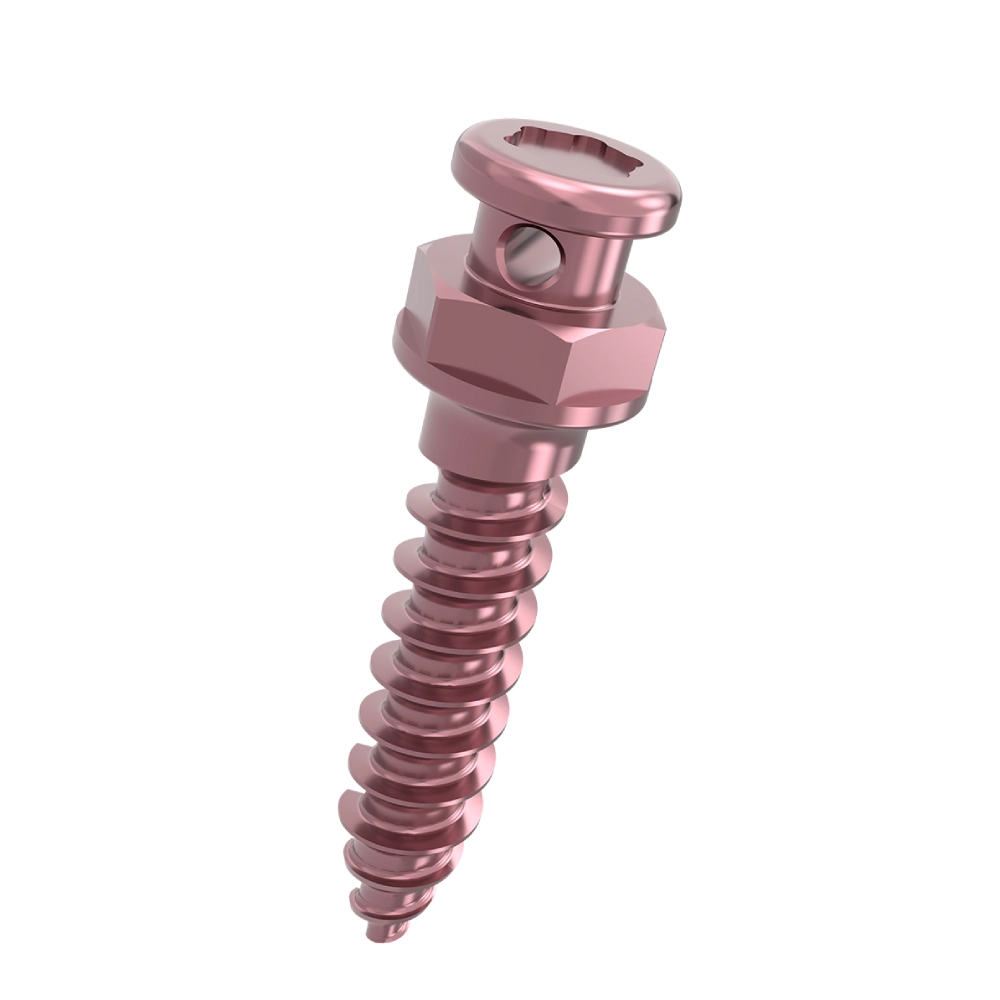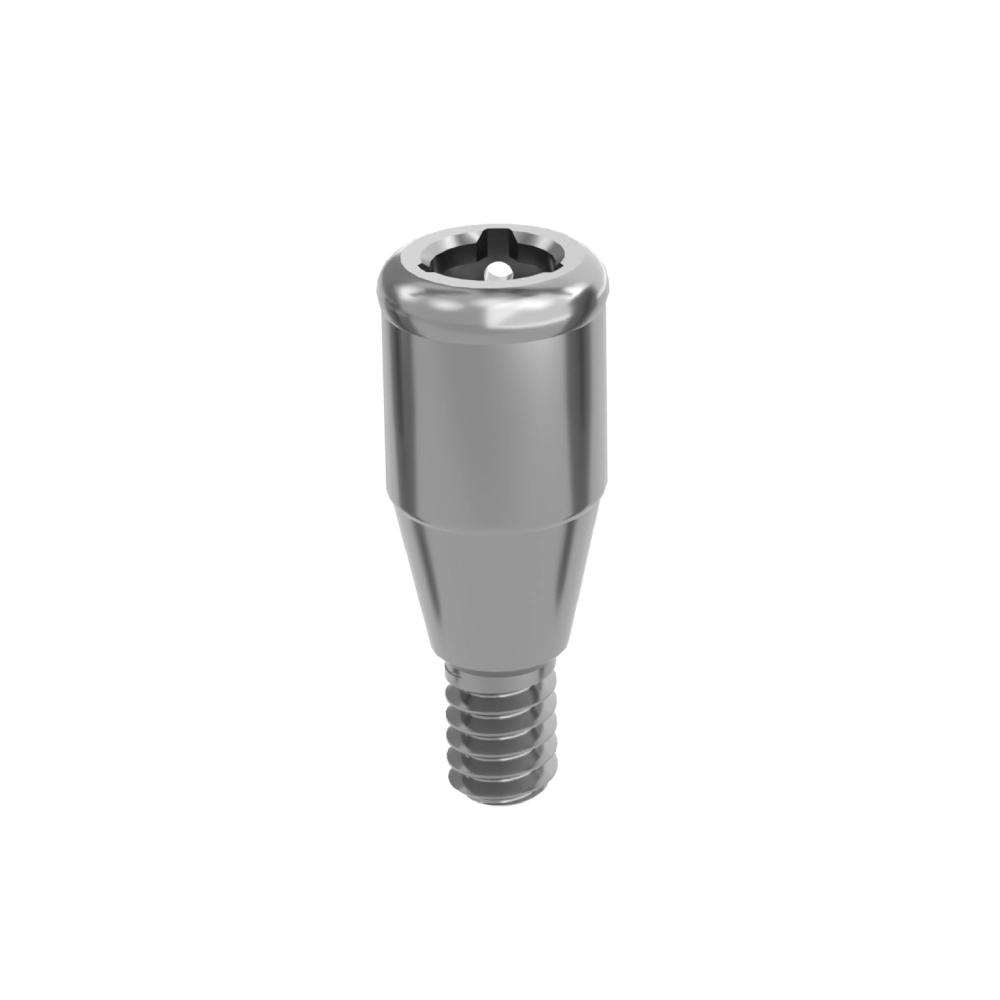
In the history of dental medicine, implant technology was once labeled as “experimental.” At that time, the technique was still in its exploratory stage—treatment was long and required significant time and patience from patients. Additionally, the high cost made it unaffordable for many, and it was viewed as a niche and specialized form of restoration.
However, with the rapid advancement of technology and the continuous accumulation of clinical experience, implant dentistry has undergone a dramatic transformation. Today, it is increasingly integrated into routine restorative care and has become a common solution for patients with missing teeth.
For general dentists, this shift brings new challenges. They must select from a wide array of implant systems one that not only delivers predictable and stable treatment outcomes, but also ensures affordability—both for sustainable clinic operations and for patients to accept treatment with confidence.
After all, meeting patient needs while maintaining a practice’s economic viability is equally important.
Looking back over the past decade, amid fierce competition among numerous implant systems, the Bicon implant system has gradually stood out as one of the most cost-effective options in the market. So, what exactly has enabled Bicon to secure its place among so many competitors? This article will take a closer look at the reasons behind its success.
Why Cost Matters in the General Office
In the field of oral healthcare, both specialists and general practitioners serve as guardians of patients’ oral health, yet the focus of their work and the challenges they face differ markedly. Specialists concentrate on a particular branch of dentistry—such as orthodontics or periodontics—devoting significant time and effort to mastering cutting-edge techniques and complex cases within that niche, constantly pushing the boundaries of professional depth.
General dentists, by contrast, act as the “primary care physicians” of the mouth. They must possess broad, comprehensive knowledge of dentistry and, in daily practice, strike a delicate balance between surgical efficiency and a heavy load of preventive and restorative tasks. Prevention is a major component of their role: they perform regular oral examinations to detect early signs of caries, emerging periodontal disease, and other potential issues, then implement measures such as hygiene counseling, fluoride application, and sealants to stop problems before they escalate. Their restorative workload is equally demanding, ranging from simple fillings and extractions to complex porcelain restorations and removable prostheses.
Within this high-intensity, highly varied work model, every extra appointment or laboratory fee becomes a hidden “cost killer,” quietly eroding the value of chair time. Additional visits require patients to carve out more time from work or daily life, raising their personal cost and risking treatment abandonment due to scheduling conflicts—both of which can reduce the practice’s caseload and revenue. Laboratory fees, inevitable for fabricating restorations, squeeze profit margins when too high.
Hence, a system that reduces the number of visits, streamlines restorative procedures, and minimizes inventory is immensely appealing to general dentists. Fewer appointments allow patients to complete treatment efficiently, saving time and effort, while boosting the clinic’s throughput so the dentist can serve more patients in the same time frame. Simplified restorative workflows cut complexity and risk, lowering errors and delays and improving treatment quality and success rates. A lean inventory ties up less capital, reduces waste, and lowers management costs, granting the practice greater financial flexibility. Together, these advantages translate directly into higher profits and more robust economic returns for the general dentist’s practice.
Bicon’s Built-In Economic Advantages
| Feature | Financial Impact on Practice | Benefit to Patient |
|---|---|---|
| Two-piece Morse-taper (1.5°) connection | No screws to track, torque, or replace ⇒ fewer maintenance visits | Lower long-term maintenance costs |
| Versatile placement protocols (one-stage, two-stage, or immediate load) | Dentist can choose the fastest clinically acceptable workflow | Shorter treatment timeline |
| Wide diameter, short-length options | Often avoids bone grafting ⇒ no grafting kit, fewer surgical appointments | Less invasive, reduced overall fee |
| Conventional crown & bridge impressions (no custom coping) | Uses existing materials; lab fees resemble routine PFMs | Familiar restorative workflow |
| “Cold-weld” abutment stability | Virtually eliminates screw-loosening emergencies | Fewer post-operative visits |
Up-Front Cost Breakdown
(Typical single posterior unit in a suburban U.S. practice)
| Item | Typical Fee | Cost to Dentist | Notes |
|---|---|---|---|
| Surgical placement | $ 1,000 | — | 30–45 min chair time |
| Bicon fixture | — | $ 175–$ 195 | Depends on surface finish |
| Healing/integrated abutment | — | $ 85–$ 100 | Any angle convertible |
| Impression & crown seat | $ 700 | $ 100–$ 250 | Lab PFM or zirconia |
| Totals | $ 1,700 | ≈ $ 400 | Net ≈ $ 1,300 for 60–75 min total chair time |
By comparison, a three-unit PFM bridge in the same office commands roughly $ 1,900, but ties up 90–150 minutes of chair time, incurs $ 300 in lab fees, and risks future endodontic or periodontal work on the abutment teeth—costs the patient ultimately bears.
Clinical Versatility Cuts Hidden Costs
The accumulation of various types and specifications of implants and their corresponding components not only takes up significant physical space but also consumes substantial financial resources. A small oversight in inventory management can lead to either overstock or shortages, both of which may disrupt the normal operations of a dental practice. However, the emergence of a universal implant platform has brought a ray of hope—offering a fresh solution to long-standing inventory challenges.
This universal platform features high compatibility, allowing a single implant type to support multiple restorative approaches. Whether it’s fabricating a single crown to restore both aesthetics and chewing function for patients with a missing tooth, or using telescopic crowns to provide a stable and comfortable solution for partially edentulous patients, or employing bar attachments to meet the stability needs of fully edentulous patients—the same implant can handle it all. It can even be used in immediate loading cases, enabling patients to regain function shortly after surgery and reducing overall treatment time. This “one system, multiple uses” feature greatly simplifies the variety of implants and components a clinic needs to stock.
In the past, clinics had to store a wide range of implant types and compatible abutments, screws, and other components to meet the diverse needs of patients. This not only increased the complexity of inventory management but also risked overstock, tying up large sums of capital. The universal implant platform fundamentally changes this situation. Because the same implant can adapt to various restorative protocols, the number of system components needed is significantly reduced. Fewer components mean lower annual inventory costs. Clinics no longer need to invest heavily in purchasing large volumes of different implant models and accessories, nor worry about financial loss from overstocked or obsolete items.
At the same time, this reduction in inventory brings another key advantage—less staff training time. Traditional implant systems often involve a large variety of complex components, requiring considerable time and effort for staff to learn how to handle each one properly. This increases training costs and the risk of errors during procedures. In contrast, the components of a universal implant platform are relatively simple and standardized, allowing staff to become proficient much faster. This not only boosts operational efficiency but also enables clinics to onboard new team members more quickly, ensuring timely and effective patient care.
Analysis of Time Efficiency Advantages of a Universal Implant Platform
In dental implant treatment, time is productivity. Efficient use of clinical time not only improves the patient experience but also brings significant economic benefits to the dental practice. The following outlines the complete implant restoration process using a universal implant platform, analyzing its time efficiency and the resulting economic value.
Treatment Workflow and Time Allocation
First Visit: Implant Placement (45 minutes)
During the initial appointment, the patient undergoes implant placement surgery. The clinician begins with a comprehensive oral examination, assessing oral hygiene, alveolar bone density, and morphology to ensure suitability for the procedure. Local anesthesia is administered, and after precise positioning, the universal implant is inserted into the designated alveolar site using professional instruments. The entire process takes just 45 minutes, thanks to the user-friendly design and streamlined workflow of the universal implant platform, allowing the clinician to perform the surgery quickly and accurately.
Second Visit: Conventional Impression (After 3 Months, 10 minutes)
After placement, a 3-month osseointegration period is required to allow the implant to bond fully with the surrounding bone, ensuring long-term stability. At the second visit, the primary task is to take a conventional impression. The dentist uses suitable impression materials to accurately capture the contours of the implant area and adjacent teeth. Due to the standardized design and interfaces of the universal implant platform, the impression-taking process is straightforward and takes only 10 minutes.
Third Visit: Crown Placement (20 minutes)
Following impression-taking, the dental lab fabricates a crown that fits precisely with the patient’s oral anatomy. During the third appointment, the crown is installed. The dentist carefully checks the crown’s quality and fit, ensuring proper connection to the implant and correct occlusion. The crown is then cemented into place using a suitable adhesive. Minor adjustments and polishing are done to achieve a natural appearance and full functionality. The entire crown placement takes around 20 minutes.
Total Time and Economic Value Analysis
Total Time
Adding the durations of all three visits, the entire implant restoration process takes approximately 75 minutes in total. Compared to traditional implant workflows, the universal implant platform significantly reduces total treatment time. Conventional systems may require more visits, longer procedures, and additional steps due to the complexity and variety of implant components—resulting in a longer treatment cycle and greater time investment from the patient.
Economic Benefit
Assuming a treatment fee of $1,700, let’s calculate the hourly clinical income.
- Total time = 75 minutes = 1.25 hours
- Revenue per hour = $1,700 ÷ 1.25 = $1,360/hour
Taking into account slight variations in actual practice, the hourly income ranges between $1,360 and $1,400, which is significantly higher than that of many conventional surgical procedures. Traditional surgeries may involve greater complexity, longer chair time, and higher complication risk, all of which reduce hourly efficiency. In contrast, the universal implant platform enables high-quality implant restorations within a shorter timeframe, enhancing the economic value per treatment.
Comprehensive, Patient-Centered Cost Savings
In the field of dental implant treatment, patients care not only about the effectiveness of the treatment but are also highly concerned about the associated costs, time investment, and potential long-term health risks. With its unique design, the Bicon implant system truly embraces a patient-centered approach, offering significant savings and benefits across multiple dimensions.
Avoiding Bone Grafting: Saving Both Time and Money
In traditional dental implant procedures, when patients lack sufficient alveolar bone volume, bone grafting is often required. This additional surgery comes with extra costs—including grafting materials, surgical procedures, and postoperative care—which can total hundreds or even thousands of dollars, posing a considerable financial burden for many patients.
Moreover, bone grafting also increases the time cost of treatment. The procedure itself takes time, and patients typically require weeks or even months of healing, during which multiple follow-up visits may be necessary. This not only adds to physical discomfort but also contributes to psychological stress.
The short and wide design of Bicon implants offers a clever solution. Its unique shape is well-suited to adapt to the available bone structure, making it possible in many cases to place implants without the need for bone grafting, even when bone volume is limited. As a result, patients can avoid the high costs associated with bone graft surgery, while also shortening the healing time by several weeks, allowing for a quicker return to normal life and work.
This approach saves patients from additional surgical expenses and reduces inconvenience and distress caused by prolonged treatment, truly delivering patient-centered savings.
Morse Taper Connection: Reducing Health Risks and Hidden Costs
Peri-implantitis is a serious complication in implant dentistry, causing inflammation and tissue destruction around the implant. It can compromise implant stability and longevity, sometimes leading to complete implant failure and requiring costly retreatment. One known risk factor for peri-implantitis is excess cement residue.
In traditional screw-retained restorations, residual cement can accumulate around the implant collar due to the presence of screw channels, creating a breeding ground for bacteria and increasing the risk of peri-implantitis.
The Morse taper design used in Bicon implants effectively addresses this issue. By eliminating the need for screw channels, restorations can be cemented extra-orally and then inserted into the implant. This method not only simplifies the procedure but also minimizes excess cement around the implant neck.
Extra-oral cementation allows clinicians to work in a clearer and more controlled environment, ensuring optimal use of cement and reducing the risk of over-application. Consequently, the incidence of peri-implantitis is significantly lowered, sparing patients from the potential follow-up costs associated with managing complications—such as medications, retreatment surgeries, or professional cleaning—and reducing the discomfort and risk to their health.
Through its short, wide-body design and Morse taper connection, Bicon implants deliver patient-centered benefits in every aspect—from eliminating the need for bone grafts and saving time and costs, to reducing the risk of peri-implantitis and lowering long-term expenses. These features embody a holistic, patient-first philosophy, providing real and tangible advantages for those undergoing dental implant treatment.
Key Takeaways for Practice Owners
- Lower Inventory, Higher Utilization. One tray of drills and a small selection of fixtures/abutments cover the majority of everyday cases.
- Fewer Appointments = Happier Patients. A three-visit timeline compares favorably with bridges and removable partials, improving case acceptance.
- Predictable Margins. With hard costs around $ 400 and chair time under 90 minutes, profitability is straightforward to forecast.
- Clinical Flexibility. Immediate-load protocols and integrated abutment options let clinicians tailor treatment to bone quality and patient priorities without switching systems.
Conclusion
For general dentists who both place and restore implants, the Bicon system delivers a rare blend of surgical simplicity, restorative familiarity, and hard-number cost efficiency. When a single posterior implant can net over $ 1,300 in barely an hour of chair time—while offering patients a durable, tooth-saving alternative to bridges—cost effectiveness stops being a talking point and becomes standard of care.
DentalMaster offers a full range of Bicon compatible solutions, including abutments, impression components, and more. If you have any needs or inquiries, please feel free to contact us directly.


